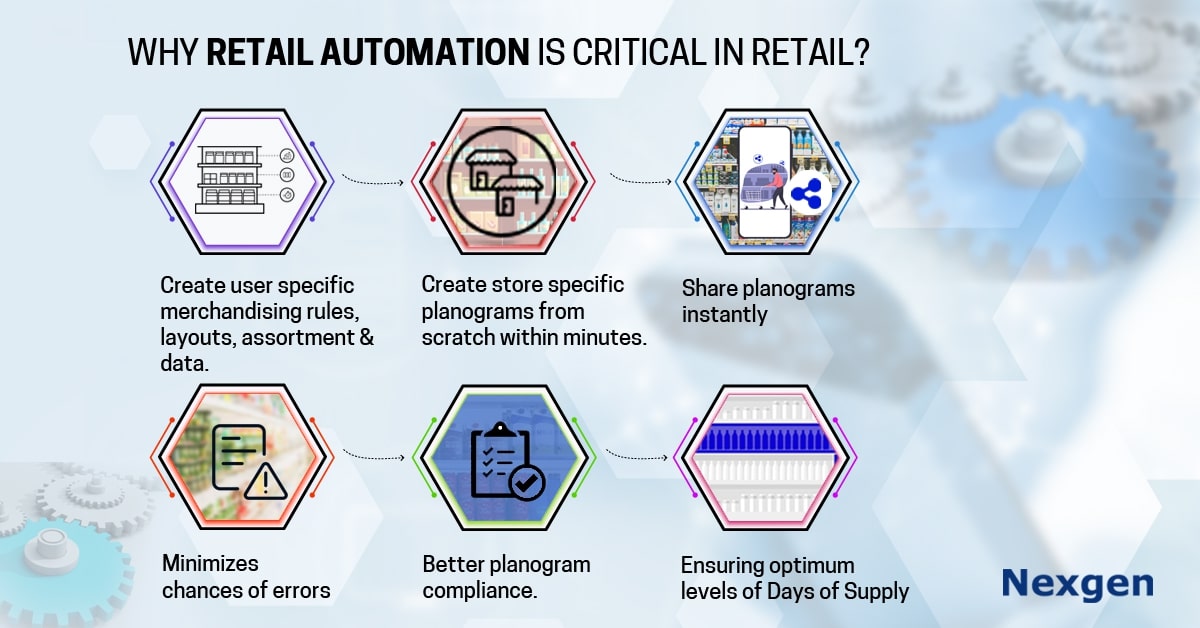Recent studies suggest that almost 65% of the total purchase decisions are made in-store. This highlights the impact of store, shelves and aisle on a consumer’s buying decision. In order to leverage the opportunities of impulse buying decisions, retailers rely greatly on planograms. These are visual merchandising tools that help retailers in deciding where and how products should be paced for maximum visibility and sales.
Ever since the beginning, planograms have been a crucial factor in retail sales strategy. However, compared to traditional planogramming approach, retailers are now moving towards automated planograms that help save time, cost and of course effort.
Understanding planogram automation
In simple words, planogram automation refers to the automated technique of arranging products on shelves and fixtures as per a fixed plan, which is decided by the user. Based on sales data and pre-defined rules, planogram automation tool can calculate space allocation for each product or assortment range. Let’s take an example to understand this better. If a user wants to arrange products based on category or sub category, he can do so in few minutes compared to a manual planogram where the same exercise would take hours to complete.
Planogram automation takes into account user specific merchandising rules, layouts, assortment and data to create store specific planograms. Research suggests that organizations adopting planogram automation witnessed an increase in performance and productivity while achieving planogram quality and quantity. Planogram automation benefits both retailers and suppliers in terms of increasing efficiency and competitiveness, improving inventory levels and sales, higher market responsiveness and greater return on investment.
Another major reason why retailers are opting for planogram automation is because it lets them focus more on setting up product range or working on assortment on shelf and focus less on time consuming planogram creation. Since planograms are created as per merchant driven store specific information, manual planogram handling is minimized to a great extend.

Benefits of planogram automation
Create store-specific planogram from scratch within minutes: While creating planograms using traditional methods like power point is still widely used, it is very time consuming and requires a lot of effort. In contrast, with automated planograms, users are able to create store specific planograms from scratch within minutes and share planograms instantly. This results in a reduction in manual work, rollout time and operating cost.
Minimizes chances of errors: When organizations use hard copies or PDF’s to distribute planograms, manual edits have to be made on the print outs and send back to category management team. Apart from being a time consuming process, it can also increase chances of errors. On the other hand, using automated planograms allow users to create and share planograms instantly using the same platform resulting in reduced errors and better planogram compliance.
Ensuring optimum levels of Days Of Supply: With global out of stock rates at 8%, planogram automation has become crucial than ever before to provide timely visibility into out of stocks. Planogram automation tool helps retailers in optimising facing based on demand in stores thus ensuring merchandising flow is in line with retail strategy. Retailers can be assured that right products will always be available on shelves resulting in reduced out of stocks and optimized Days Of Supply.
Overview of Nexgen POG
Nexgen POG is a robust cloud-based visual merchandising tool. It is a user-friendly and easy to use planogram solution. It comes with an array of features including customizable template, bulk upload of images, easy compliance, unlimited licenses, multi-device compatibility and much more. Web based sharing feature of Nexgen POG allows users to securely share planograms to anyone including external users. The software also comes with an efficient planogram compliance system. In case of any non-compliance, just raise a ticket to report the issue and get them solved.
Get Your Free Trial Now!